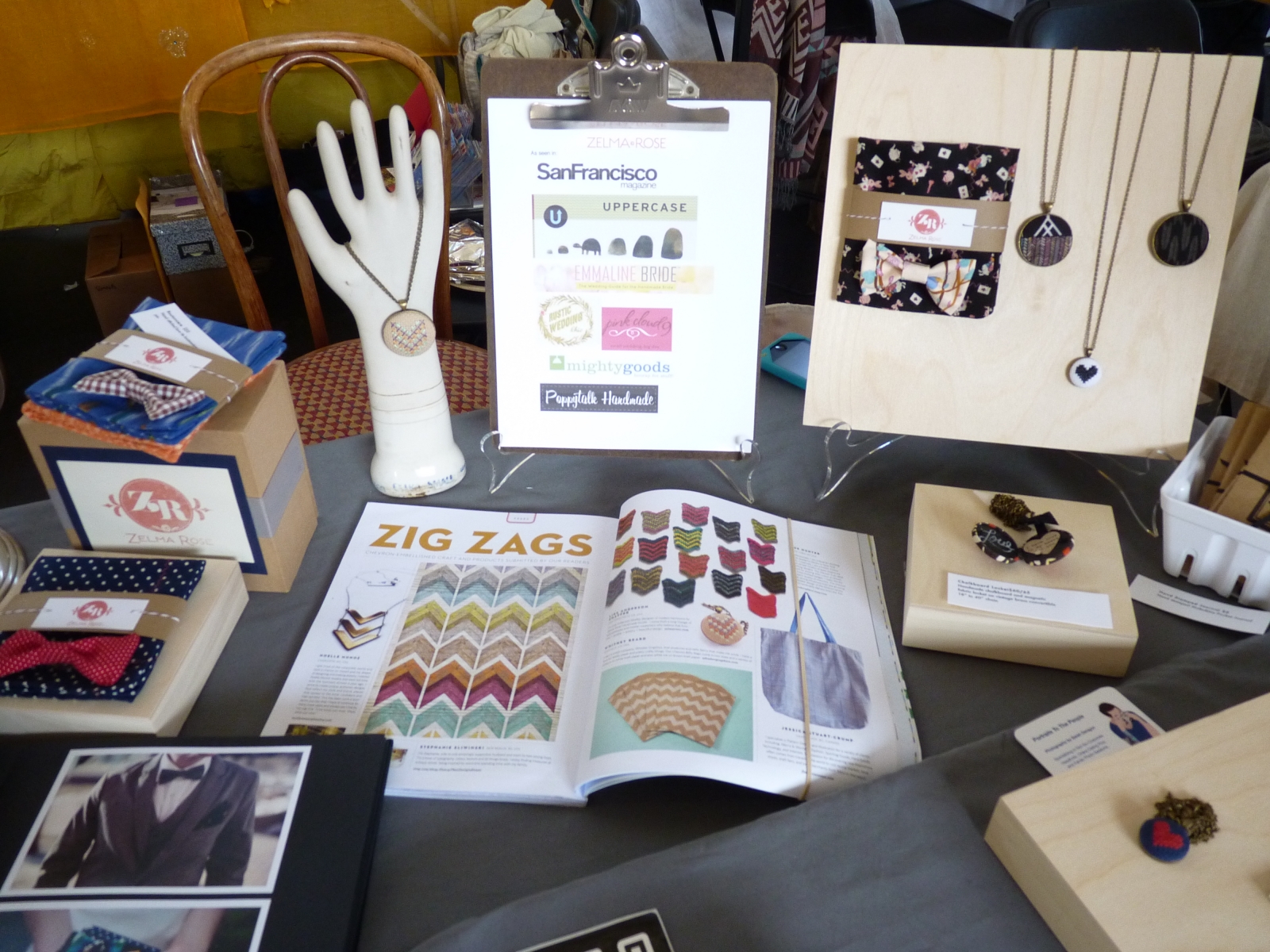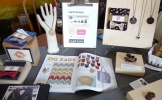If you are an indie business owner, pricing your products often will be on your mind. Pricing is something that every small business owner struggles with, no matter the product or discipline. When researching formulas to help determine your pricing, there is no shortage of theories on how to price your goods and services.
A tried and true standard formula for pricing your products that I’m sure you have seen is the following:
Materials + Labor + Expenses + Profit = Wholesale x 2 = Retail
I used this formula when I first started Zelma Rose, to help me establish a baseline for my prices. I like this formula. It’s a classic and continues to resonate because it reminds us to include all the necessities, like our materials, overhead, a living wage for ourselves, and a profit. I also like the ease of determining a retail price. Just multiply by 2 or 2.5, depending upon your profit margin. Easy!
Pricing multiple product lines can be a challenge.

How To Build an Artist Website
Sign up for our newsletter and get the book How to Build an Artist Website for free!
Now, over two years later, with a clear handle on my target audience, my most popular items, and a better understanding of what items sell best through specific channels, I’m in the process of revisiting my method of pricing, using a totally different method to do so. After two years as an indie business owner, I have a much better handle on production costs, production times, and all the little incidentals that occur along the way.
Experience has given me a whole new perspective on pricing. I’ve been researching methods of pricing your products for the last few months and there is so much advice out there, some good, and some bad. A little gem of advice I like from Design Love Fest is:
“If your fee doesn’t make your stomach flip, you’re not charging enough!”
Yikes! I have spoken about this quote with fellow indie business owners and we all agree we know the feeling! I have been there many times — answering a custom inquiry, hitting "send," and feeling a little sick about my quote. It is so very hard for us to ask for what we are worth and lay out exactly what we need to do our job.
But consider this: you are the only expert at what YOU do. Consider your education, mastery, and time spent honing your skill, when pricing your products. Think long and hard about how you have gotten to where you are. All these factors account for a certain level of expertise and should be recognized when setting your prices.
Also important to consider is the lifespan of your business. Is your business a hobby? Do you want to go the extra mile and quit your day job? How much time do you have to devote to the process of making? How valuable is your time? All these questions should weigh heavily in your pricing strategy.
Those are the basics. Now let’s tackle the more abstract: perceived value. Yes, it’s really that important. No matter how many channels you sell through — online, wholesale, retail, or craft show — you cannot be everywhere at once. Most of us have developed strong relationships with our stockists and can feel well-represented in out retail environments. Craft shows are not a worry. We are there selling our product face to face with customers. We can explain our process, talk about our inspiration and defend our pricing. But what about online? How do we defend our pricing when we cannot place product into the customers’ hands? That’s where perceived value can make or break your conversion rates.

When setting a price, consider production times.
Because it is impossible to physically place a product in an online customer’s hand, an indie business owner is actually selling the IDEA of a product and not the actual product. In addition to informing the customer of size, weight, color, materials, lead time and shipping times, product descriptions must also seduce your customer and help support your pricing. Product descriptions must tell the customer:
1. Why your product is unique,
2. What special technique or level of skill went into making it,
3. Why it will make their lives better,
4. Why they need it.
Part of increasing a product’s perceived value is to separate it from a commodity. Why is your particular handmade baby blanket more unique than that of a competitor who charges half the price? It’s all in the story of your product, the story of your brand, and clearly spelling out items 1-4 above.
There is a theory — I’m sure you have heard it — that raising prices increases sales. It’s true. Really scary to do, but true. I’ve tried in in the last three months, and while it took some anxious waiting, my sales did indeed increase. Here’s something important to ponder when considering a price increase:
Yearly livable wage.
There is a lot of chatter in the indie business community about number of sales. Sites like Etsy and others support this chatter by making public the number of sales you have had in your shop. While this can increase customer trust and encourage new customers, it can also give the rest of us some misguidance. When thinking about your prices, do a little research. Keep in mind your goal in terms of the growth of your business. Is it a hobby or is the ultimate goal full-time? Check out some shops that have high numbers of sales and do the math. If an indie business has 2,500 sales, but only sells item for $10 and under, is that a livable wage for you on a yearly basis? Consider this: What if you sold fewer items at a higher price point? Maybe you'd make fewer sales, but more profit from each sale. You would spend less time in production, and have more time to diversify your selling channels, create new designs, and build your business by teaching, blogging, and collaborating with other makers.
When it comes to pricing your products, there is a lot to consider. Take your time, try out different formulas, create your own and don’t be afraid to experiment. Let me know your questions!





